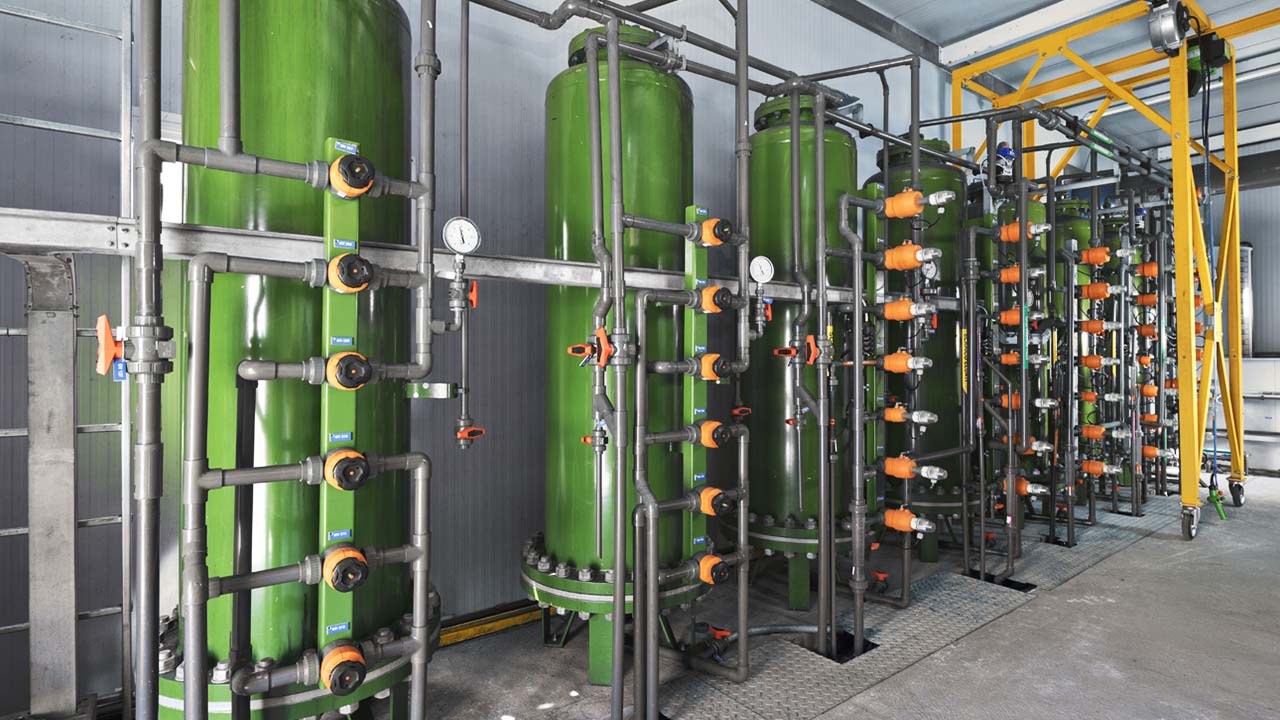
Demineralization to Ion Exchange Resins
Water taken from the environment has different levels of salinity, depending on the geological composition of the soil.
In order to use it in a production process it may require that it be properly demineralized, that is, deprived of the salts present, which may occur in different concentrations depending on the type of supply, from groundwater, spring, surface water or sea water.
The degree of salinity, detectable through electrical conductivity, can be reduced to complete zero (as is the case, for example, in thermal power plants), depending on the purpose of use.
The result is related to water characteristics, types of resins and their combination of use, which constitutes a specific line of demineralization.

The water demineralization plant with ion-exchange resins makes it possible to make the flow suitable, both in theinlet and recovery stages of water in production.
The process occurs through ion exchange, between the two resins, cationic and anionic, and water. The choice of cationic or anionic resins is a function of the type of ions present within the stream to be treated.
Due to reactions that engage a state of chemical equilibrium, the exchange and subsequent fixation of dissolved salts on the resins takes place. The conductivity value detected as a result of the process can be as low as 1 microsimens, indicating the level of water demineralization achieved.
In the case of resins on mixed beds this result can be further reduced in order to ensure a higher degree of purity, reaching a value of less than 0.1 microsimens.

The main coordinates
The process
In the Galvanics Sector, this type of plant is used in process water, going to the rinse tanks.
The flow in this case is conveyed to specific filters, such as quartz or granular activated carbon, and then subjected to ion exchange resins, constituting a closed and continuous cycle.
When exhausted, the resins can be reg enerated by restoring the original condition using a solution of water and hydrochloric acid on the cationic resin for the regeneration process while using a solution of water and caustic soda on the anionic resin.
Prior to disposal, the eluate contained in the storage tank can be subjected to vacuum evaporators, thus allowing forfurther concentration.
When to use Ion Exchange Resin Demineralization
This type of treatment is widely used in the washing circuits of companies that produce electronic type objects, in cogeneration turbines in the area of power plants, in hospitals or analysis centers, and in all contexts wherehigh water purity is required.
Benefits
- High quality level of flow
- Low water consumption, only in the regeneration phase
- Low electricity consumption
